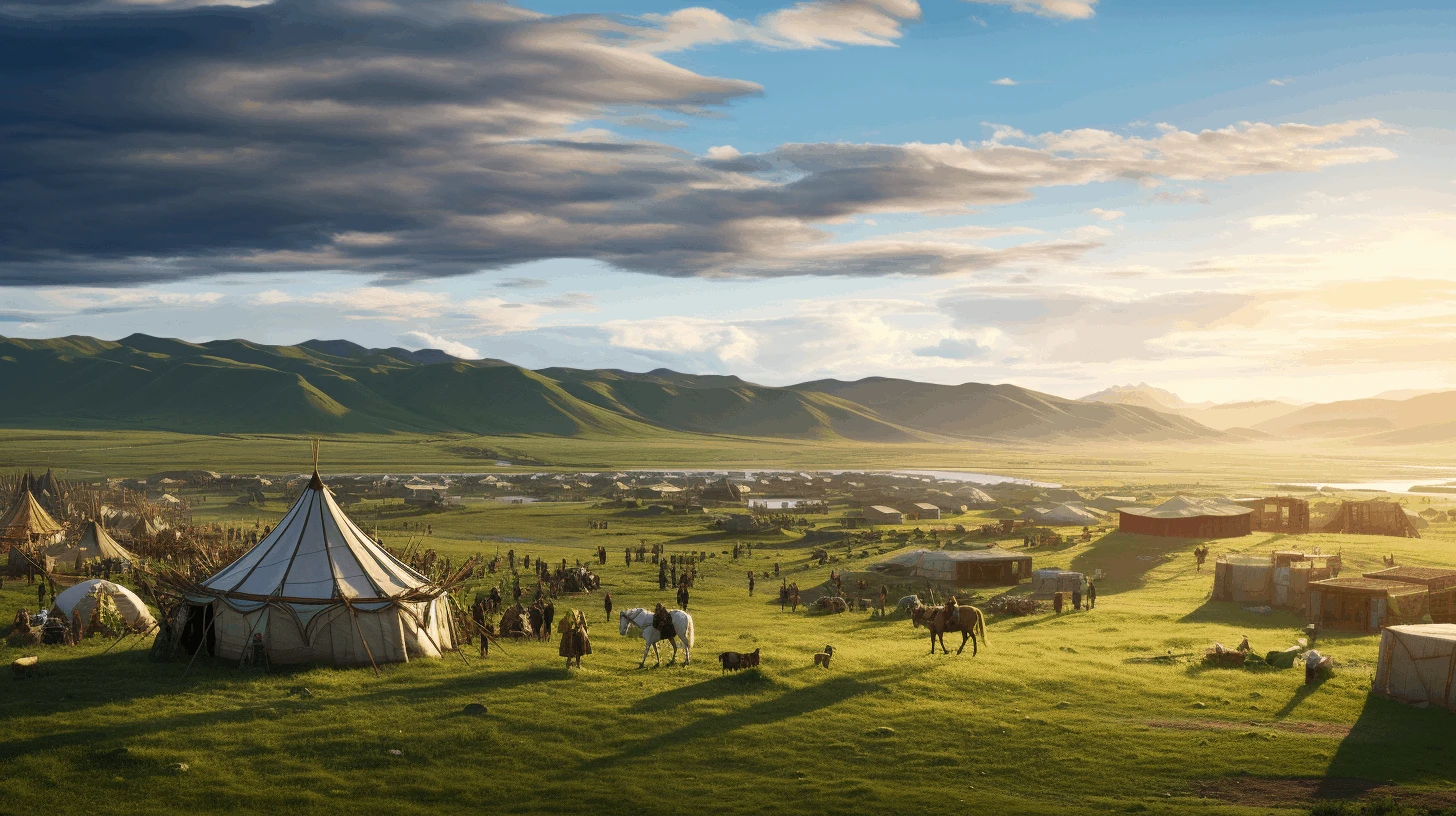
Prayer times in Mongolia
3:54 PM • +07:00 GMT
Payer Times for Cities in Mongolia
| City | Fajr | Sunrise | Dhuhr | Asr | Maghrib | Isha |
|---|---|---|---|---|---|---|
| Altai | 06:29 | 08:18 | 12:39 | 14:42 | 17:00 | 18:43 |
| Choibalsan | 06:19 | 08:12 | 12:26 | 14:22 | 16:40 | 18:27 |
| Darkhan | 06:55 | 08:52 | 13:00 | 14:51 | 17:08 | 18:59 |
| Erdenet | 07:02 | 08:58 | 13:08 | 15:00 | 17:18 | 19:07 |
| Hovd | 06:50 | 08:43 | 12:57 | 14:54 | 17:12 | 18:59 |
| Mörön | 07:18 | 09:16 | 13:23 | 15:13 | 17:31 | 19:22 |
| Sainshand | 06:31 | 08:17 | 12:43 | 14:52 | 17:10 | 18:50 |
| Ulaanbaatar | 06:49 | 08:42 | 12:56 | 14:53 | 17:11 | 18:58 |
| Ulaangom | 06:51 | 08:50 | 12:56 | 14:44 | 17:01 | 18:54 |
| Ölgii | 06:58 | 08:54 | 13:04 | 14:57 | 17:14 | 19:04 |
Prayer Times of Others Cities in Mongolia
About Mongolia
Mongolia, located in East and Central Asia, is the world's second-largest landlocked country. It spreads over an enormous area of over 1,566,000 square kilometers, making it bigger than many European nations combined. This expansive country is known for its vast, rugged expanses and enduring nomadic culture, and is famously sparsely populated, with a population of only around 3.3 million people. The country's capital and largest city, Ulaanbaatar, hosts nearly half of the country's entire population. Mongolia is internationally known for the Gobi Desert, one of the world's largest deserts, located in the southern part of the country. Another significant historical aspect of the country is the Mongol Empire, which was the largest contiguous land empire in world history, founded by Genghis Khan in 1206. The Mongolian culture, highly influenced by the nomadic way of life, is a rich tapestry of traditional music, unique art, and distinctive cuisine, such as airag (fermented mare's milk) and boodog (goat or marmot barbecue). The Mongolian language is the official language of the country, written in traditional Mongolian script, one of the oldest in the Central Asian region. The country's economy is heavily centered around agriculture, particularly livestock, and mining, especially coal, copper, and gold. In recent decades, Mongolia has been transitioning successfully to a market economy. The country's incredibly rich heritage, combined with its stunningly diverse landscapes, ranging from the harsh Gobi desert to lush, grassy steppes, the Altai Mountains, the wide Orkhon Valley, and the serene Khuvsgul Lake, make Mongolia a fascinating and captivating destination for travelers from all walks of life.